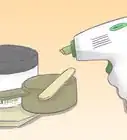This article was written by Navid Malakouti, MD, FAAD and by wikiHow staff writer, Dan Hickey. Dr. Navid Malakouti is a Board Certified Dermatologist specializing in cosmetic dermatology, dermatologic surgery, and medical dermatology. He treats patients of all ages for conditions like acne, rosacea, psoriasis, skin cancer, botox, fillers, lasers, and chemical peel. Dr. Malakouti is a Diplomate of the American Board of Dermatology, Fellow of American Academy of Dermatology, American Society for Dermatologic Surgery, and American Society for Laser Medicine and Surgery, and a member of the Skin of Color Society. He holds a BS in Biochemistry and Cell Biology from The University of California, San Diego and an MD from The Virginia Commonwealth University School of Medicine. He completed his Dermatology residency in Washington D.C. at Howard University, VA Medical Center, Children's National Hospital, and the National Institutes of Health.
This article has been viewed 21,280 times.
Getting razor bumps on a sensitive and visible area like your neck is the worst—is there anything you can do to get rid of them? Razor bumps happen when your very short, freshly shaved hairs curve back into your skin and become ingrown. Fortunately, there are a variety of simple ways to soothe your skin and unclog your pores to release the hairs and remove the bumps. We’ve put together a helpful list of ways to get rid of and prevent razor bumps on your neck. If you’re ready for a clean, hassle-free shave, keep scrolling!
This article is based on an interview with our board certified dermatologist, Navid Malakouti. Check out the full interview here.
Steps
Apply a warm washcloth to the affected area.
-
A warm, wet compress softens the skin and draws out the ingrown hair. Place a clean washcloth under warm water and wring it out until it’s damp. Hold the washcloth to your beard and neck area for about 10 to 15 minutes.[1] X Trustworthy Source Cleveland Clinic Educational website from one of the world's leading hospitals Go to source
- This method is especially effective when you pair it with another treatment option.
- A hot shower or sauna has a similar effect as a warm washcloth.
Moisturize the area with aloe vera.
-
Aloe vera has moisturizing and anti-inflammatory properties. Look for gels or creams with aloe to reduce the swelling and redness of your razor bumps. Apply the product according to the instructions, usually after a shower when your neck skin is clean and exfoliated.[2] X Research source
- Alternatively, take the gel from inside an aloe plant leaf and apply it to your neck for about 30 minutes. Repeat as necessary.
- Aloe vera is also antibacterial, which helps prevent the razor bumps from getting infected.
Soothe bumps with diluted tea tree oil.
-
Tea tree oil opens your pores so ingrown hairs can escape razor bumps. To use, mix 10 to 15 drops of tea tree oil in a bowl of warm water. Soak a washcloth in the mixture and apply it to your beard and neck area for about 30 minutes. Repeat as needed.[3] X Research source
- If the oil is irritating your skin, dilute your mixture with even more water or try a different treatment method.
- Tea tree oil is anti-inflammatory and soothes swelling or redness around your razor bumps. It’s also antibacterial, which helps prevent infection.
Wash your neck with an exfoliating scrub.
-
A gentle exfoliant sloughs away dead skin cells trapping the ingrown hair. Apply the exfoliant to the affected area according to the instructions. Most often, you’ll gently rub the exfoliant in circular motions for a few minutes and then rinse your neck with warm water.[4] X Trustworthy Source Cleveland Clinic Educational website from one of the world's leading hospitals Go to source
- Exfoliating cleansers often include sugar, salt, ground up fruit pits, or tiny beads that manually rub and remove dead skin.
- Instead of an exfoliating cleanser, try using a washcloth or gentle brush to rub away dead skin cells and guide short hairs out of clogged pores.
- Regular exfoliation is a great way to get rid of and prevent future razor bumps on your neck.
Use products with salicylic or glycolic acid.
-
Chemical exfoliants contain acids that slough away the top layer of skin. Use these lotions, toners, or washes several times a week according to their instructions to gradually thin the outer layer of skin and unclog pores that trap short hairs. Chemical exfoliants speed up the healing of existing bumps and prevent new ones.
- Try to avoid using a chemical exfoliant immediately after shaving since it can burn or irritate freshly shaved skin.
- Look for products with the terms “alpha hydroxy acid” (glycolic acid) or “beta hydroxy acid” (salicylic acid).
Remove ingrown hairs with tweezers.
-
Manually removing the ingrown hair can get rid of a razor bump quickly. First, sterilize your tweezers (or a needle or pin) with alcohol and wash your neck skin and hands with soap and water. Firmly grip the hair with the tweezers and pull to remove.[5] X Trustworthy Source Cleveland Clinic Educational website from one of the world's leading hospitals Go to source
- Manual removal only works if the hair is visible or protruding from the razor bump.
- If the hair isn’t visible, picking and poking at the bump with tweezers can cause more injury, irritation, or infection.
Shave less often.
-
Less shaving means longer hair, which leads to fewer razor bumps. Aim to shave every other day or so rather than every day. This allows the hair on your neck to grow slightly, decreasing the chance of creating ingrown hairs.[6] X Research source
- Stop shaving areas with visible razor bumps. Shaving over or around bumps can cause more irritation and skin damage.
Cleanse your neck before shaving.
-
Clean, moisturized, wet skin is less likely to develop razor bumps. First, wash and exfoliate your skin (use whichever exfoliant you prefer, manual or chemical). Take care not to use any products that cause irritation before you shave. Finish with a pre-shave oil or lubricant to moisturize your skin for shaving.[7] X Research source
Shave in or after a shower.
-
The heat and moisture from a shower soften your skin and hair. Shave right after a shower while your skin is still warm and slightly wet to make razor bumps less likely.[8] X Research source Shaving in the shower is ideal—an anti-fog mirror on the wall of your shower makes it a breeze.
- If you don’t have time for a shower, hold a warm, wet towel or washcloth to your neck for about 5 minutes to get a similar effect.
Apply a moisturizing shaving gel.
-
A moisturizing shaving gel or cream reduces the risk of irritation. This is especially true for people with dry or sensitive skin. Let the gel or cream sit on your skin for a minute or two, and make sure it’s still wet before you begin shaving.[9] X Research source
- If you’re concerned about acne, look for a shaving cream that is safe for acne-prone skin (they’re usually oil-free or have acne fighting ingredients like salicylic acid).
Use a clean, sharp razor.
-
Razor bumps can form from irritation caused by a dull razor. Always use a sharp razor—if you feel any pulling or tugging on your skin during a shave, it’s time for a new blade. A standard single-blade razor is usually sharp for about 7 shaves.[10] X Research source
- Keep your razor bacteria-free by sanitizing with alcohol before and after a shave.
- Shave with the grain of your hair in short single strokes. Try not to shave over the same patch of skin multiple times if possible.
Try an electric razor on a low setting.
-
Manual razors make it easy to shave too close and cause razor bumps. An electric razor can solve this problem. Put on a low setting to keep the hair on your neck slightly longer. This makes it less likely to curve and grow back into the skin and form a bump.[11] X Trustworthy Source Cleveland Clinic Educational website from one of the world's leading hospitals Go to source
- If you don’t have an electric razor, just use less pressure with your regular, manual razor blade to avoid cutting the hair too short.[12] X Research source
- Read the instructions for electric shavers to know when to replace the blades.
Apply a soothing aftershave.
-
A moisturizing aftershave hydrates your skin and reduces irritation. Use an aftershave that’s designed to limit razor bumps, inflammation, or irritation. Alternatively, try a lotion with antibacterial ingredients to moisturize your skin and prevent infected pores.[13] X Research source
- If your aftershave burns or stings, don’t use it again. Look for another product designed for sensitive skin or with moisturizer.
You Might Also Like
-Step-14.webp)

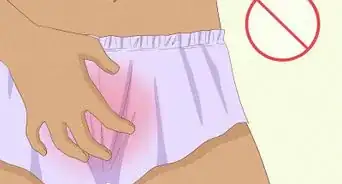 How to Shave Pubic Hair Near Your Vagina Before Sex
How to Shave Pubic Hair Near Your Vagina Before Sex


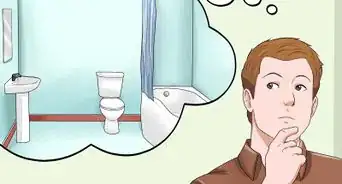
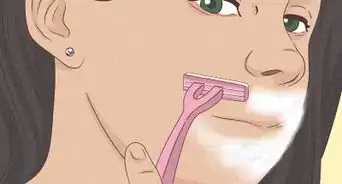
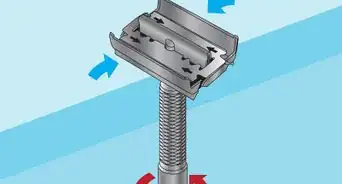
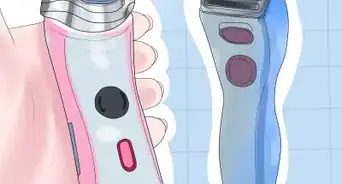 How to Shave or Trim Your Armpit Hair
How to Shave or Trim Your Armpit Hair
-Step-10-Version-2.webp) Shaving for Women: What to Use, Which Direction, & More
Shaving for Women: What to Use, Which Direction, & More

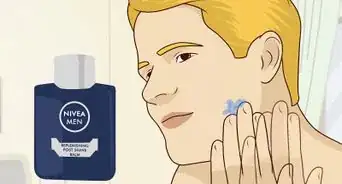
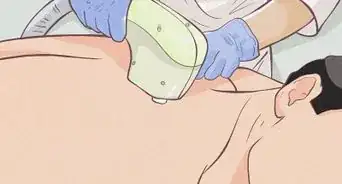 How to Shave Your Own Back (Plus Other Hair Removal Options)
How to Shave Your Own Back (Plus Other Hair Removal Options)
References
- ↑ https://my.clevelandclinic.org/health/diseases/17722-ingrown-hair
- ↑ https://www.insider.com/how-to-get-rid-of-razor-bumps
- ↑ https://www.insider.com/how-to-get-rid-of-razor-bumps
- ↑ https://health.clevelandclinic.org/want-a-smooth-safe-shave-every-time-try-these-10-tips/
- ↑ https://my.clevelandclinic.org/health/diseases/17722-ingrown-hair
- ↑ https://nyulangone.org/news/nyu-langone-skin-expert-offers-practical-advice-and-best-practices-dealing-ingrown-hair-or-razor-bumps
- ↑ https://www.insider.com/how-to-get-rid-of-razor-bumps
- ↑ https://www.yalemedicine.org/news/beard-mustache-skin-problems
- ↑ https://nyulangone.org/news/nyu-langone-skin-expert-offers-practical-advice-and-best-practices-dealing-ingrown-hair-or-razor-bumps
- ↑ https://www.insider.com/how-to-get-rid-of-razor-bumps
- ↑ https://my.clevelandclinic.org/health/diseases/17722-ingrown-hair
- ↑ https://www.businessinsider.com/how-to-avoid-razor-burn-when-shaving-neck-2019-8
- ↑ https://www.yalemedicine.org/news/beard-mustache-skin-problems
- ↑ https://my.clevelandclinic.org/health/diseases/17722-ingrown-hair
About This Article


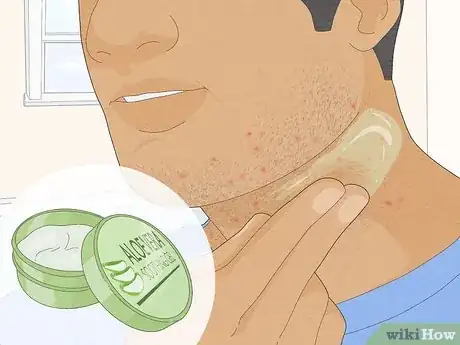
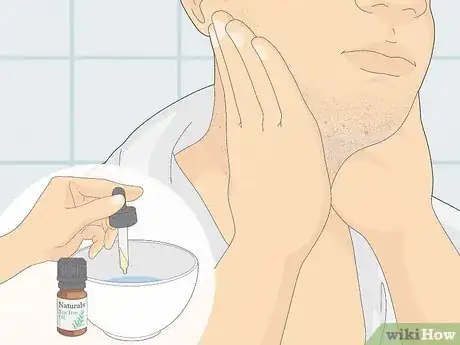
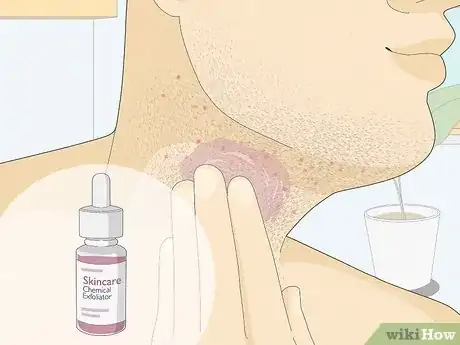
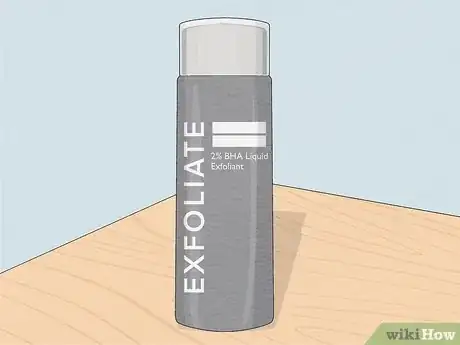

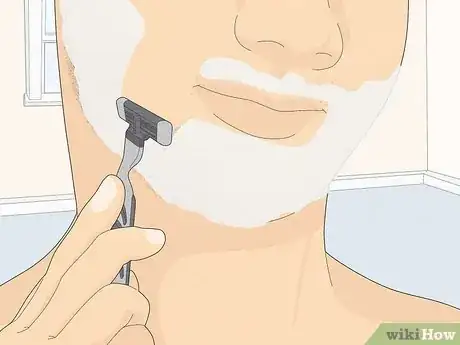
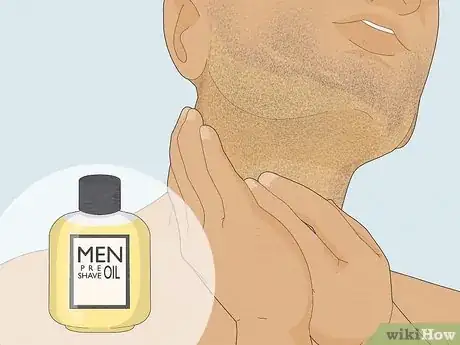


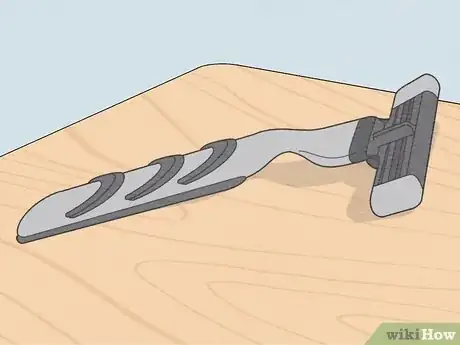
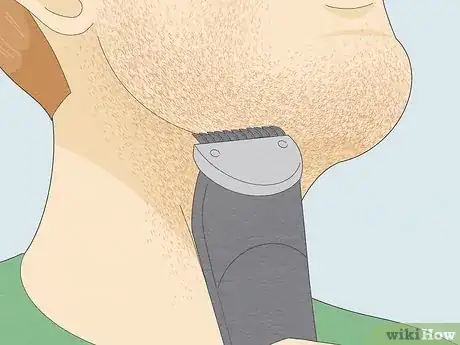
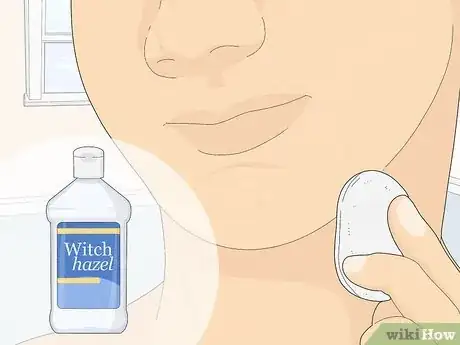






-Step-14.webp)


